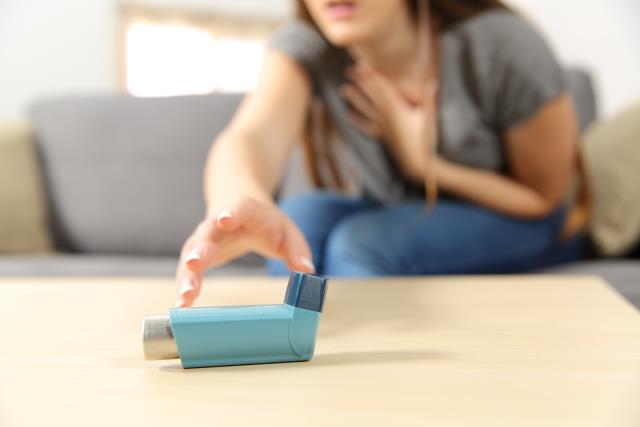A new survey commissioned by Asthma Australia has revealed that 81 per cent of Australians and 90 per cent of those who have or care for someone with asthma are concerned about the impact of air pollution on their health heading into bushfire season.
Half of those with asthma reported experiencing an asthma flare-up caused by smoke from bushfires or hazard reduction burns in the past.
Ninety-six percent of people who have or care for someone with asthma reported they usually take steps to protect their ability to breathe when air quality declines due to bushfires, with people saying they usually close doors and windows (60 per cent) or stay inside (58 per cent) and one-third saying they wear a face mask or respirator (33 per cent).
Chief executive of Asthma Australia Kate Miranda said the Seasonal Bushfire Outlook for Summer 2024 shows an increased risk of fire for large areas of Australia.
“When it comes to bushfires, the fire itself is only one element of the danger. Bushfire smoke can also be dangerous to people with asthma,” she said.
“Bushfire smoke contains toxic pollutants that are breathed deep into the lungs. This can trigger asthma symptoms and lead to hospitalisation due to asthma attacks as well as more doctor’s visits and the need for more medicines,”
“Our survey found that 90 per cent of people with asthma or who care for someone with asthma were worried about the looming bushfire season and potential decrease in air quality caused by smoke, with half reporting that they had already had to manage bushfire related asthma flare-ups in the past.”
More than one third said they usually reschedule or cancel outdoor activities. Public places like libraries and shopping centres may become havens for almost one quarter of people who have or care for someone with asthma, who say they usually seek shelter in public buildings to deal with poor air quality.
Thirteen percent of people who have or care for someone with asthma said they usually relocate to avoid bushfire smoke.
The recent release of the Seasonal Bushfire Outlook for Summer 2024 by AFAC, the National Council for fire and emergency services reports an increased risk of fire for large areas of Australia. Southern Australia has seen below-average rainfall during the cool season and into spring and soil moisture is below average across much of southern and eastern Australia.
In Victoria, large areas of the southwest and far west, sections of the northeast as well as southwest Gippsland have an increased risk of fire, as do central northern and central southern NSW.
This paints a worrying picture for all Australians in these states, not just those with asthma.
Ms Miranda said they are asking people who may be exposed to bushfire smoke to take care this bushfire season.
“Make sure you have an updated Asthma Action Plan on hand, or book in now for a review and plan development. Refresh your Asthma First Aid knowledge. This includes how to use reliever medicines in an emergency and when to call Triple Zero (000),” she said.
“Keep a supply of in-date asthma medicines on hand and P2/N95 face masks ready. If you’re not already taking your prescribed preventer, it’s important to start now,”
“Avoid heading outdoors when air quality is poor, especially while exercising. Stay inside and close doors and windows to keep the smoke out. If you have one, use an air purifier with a HEPA filter. You may even need to head to a public place where air quality is better. When air quality improves, make sure to open doors and windows to ventilate your home,”
“Contact Asthma Australia for support and information on 1800 ASTHMA or asthma.org.au”
Bushfire smoke contains a range of pollutants that can be breathed deep into the lungs, increasing the risk of breathlessness, wheeze, cough and dry or irritated throat. It can lead to increased unplanned asthma-related hospital admissions, increased medicine use, increased anxiety and a decrease in daily activities.
Bushfire smoke is harmful to those who live with lung diseases as well as those who live with other long-term illnesses like heart disease or diabetes. People over 65 or under 5 or who are pregnant are particularly vulnerable to adverse health effects caused by bushfire smoke.
Asthma Australia’s bushfire smoke advice for people with asthma
Before bushfire season
· Take your preventer inhaler as prescribed. If you have asthma and don’t currently use a preventer inhaler, discuss this with your doctor.
· Make sure you have an updated Asthma Action Plan on hand. If you don’t have an Asthma action Plan, book in now for a review and plan development.
· Refresh your Asthma First Aid knowledge, including how to use reliever medicines in an emergency and when to call Triple Zero (000).
· Have an asthma medication plan: make sure your medicines are in date and make sure you have a 30-day supply in case of emergencies or evacuations.
· Keep your medicines in a central place for easy access.
· Seal gaps around doors and windows.
When air quality is reduced due to bushfire smoke
· Stay indoors and close doors and windows to help protect yourself during short episodes of outdoor smoke.
· Check local air quality using a trusted app like Air Smart or a government website.
· Use a HEPA air purifier indoors.
· Avoid outdoor exercise when air quality is below a ‘good’ rating.
· Wear a fitted P2/N95 rated face mask outdoors and indoors if needed.
· Consider visiting a public place with cleaner air like a library or shopping centre.
· If you are in a bushfire zone, prepare and follow your bushfire plan.







